Planetary Science
-
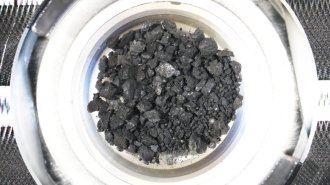 Planetary Science
Planetary ScienceSamples of the asteroid Ryugu are scientists’ purest pieces of the solar system
Samples Hayabusa2 brought to Earth from asteroid Ryugu are far fresher than similar types of meteorites that scientists have found.
By Liz Kruesi -
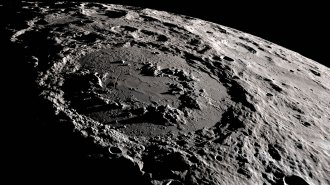 Planetary Science
Planetary ScienceIce at the moon’s poles might have come from ancient volcanoes
Volcanic eruptions billions of years ago probably released enough water vapor to have deposited ice at the lunar poles, a study finds.
By Anna Gibbs -
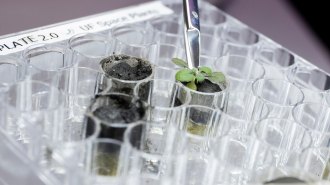 Plants
PlantsThese are the first plants grown in moon dirt
The first attempt to grow plants in Apollo samples from the moon shows the promise and potential struggles of farming in lunar soil.
-
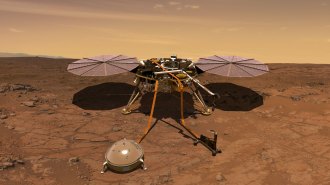 Planetary Science
Planetary ScienceNASA’s InSight lander has recorded the largest Marsquake yet
The magnitude 5 temblor, detected May 4, will help scientists learn more about the Red Planet’s interior.
-
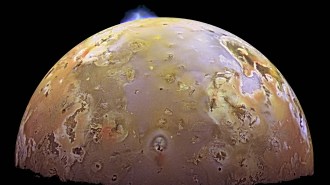 Planetary Science
Planetary ScienceLava and frost may form the mysterious lumps on Jupiter’s moon Io
Jets of gas released when hot meets cold on the volcanic moon Io could generate sprawling fields of dunes, a study finds.
By Nikk Ogasa -
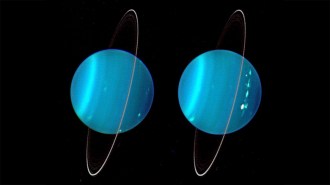 Planetary Science
Planetary ScienceU.S. planetary scientists want to explore Uranus and Enceladus next
A report on recommendations for the next 10 years of U.S. planetary science prioritizes sending an orbiter to Uranus and an “orbilander” to Enceladus.
By Liz Kruesi -
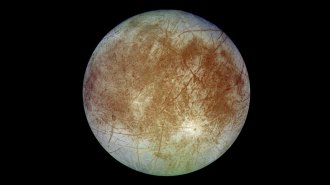 Planetary Science
Planetary ScienceEuropa may have much more shallow liquid water than scientists thought
Mysterious pairs of ridges scar Jupiter’s moon Europa. Analyzing a similar set in Greenland suggests shallow water is behind the features’ formation.
By Sid Perkins -
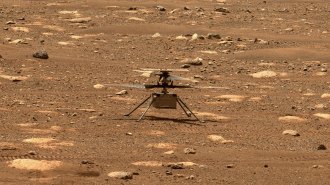 Planetary Science
Planetary ScienceHere’s how NASA’s Ingenuity helicopter has spent 1 year on Mars
The first flying robot on the Red Planet arrived as a technology demonstration. It’s now a trusty scout for its rover partner, Perseverance.
By Liz Kruesi -
 Planetary Science
Planetary ScienceThis is the biggest known comet in our solar system
The nucleus of comet Bernardinelli-Bernstein is about 120 kilometers across — about twice the width of Rhode Island — and is darker than coal.
By Sid Perkins -
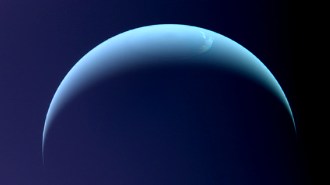 Planetary Science
Planetary ScienceNew thermal maps of Neptune reveal surprising temperature swings
Neptune's atmospheric temperatures show a global drop and later, a weird isolated spike at the south pole. Scientists don't yet know why.
By Liz Kruesi -
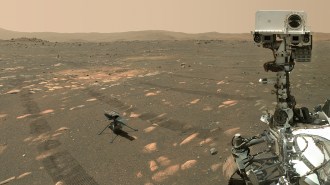 Planetary Science
Planetary ScienceMars has two speeds of sound
High-pitched clacks from a laser on NASA’s Perseverance rover zapping rocks traveled faster than the lower-pitched hum of the Ingenuity helicopter’s blades.
By Liz Kruesi -
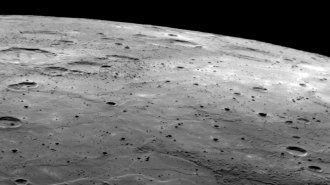 Planetary Science
Planetary ScienceDiamonds may stud Mercury’s crust
Billions of years of meteorite impacts may have flash-baked much of a primitive graphite crust into precious gemstones.
By Nikk Ogasa